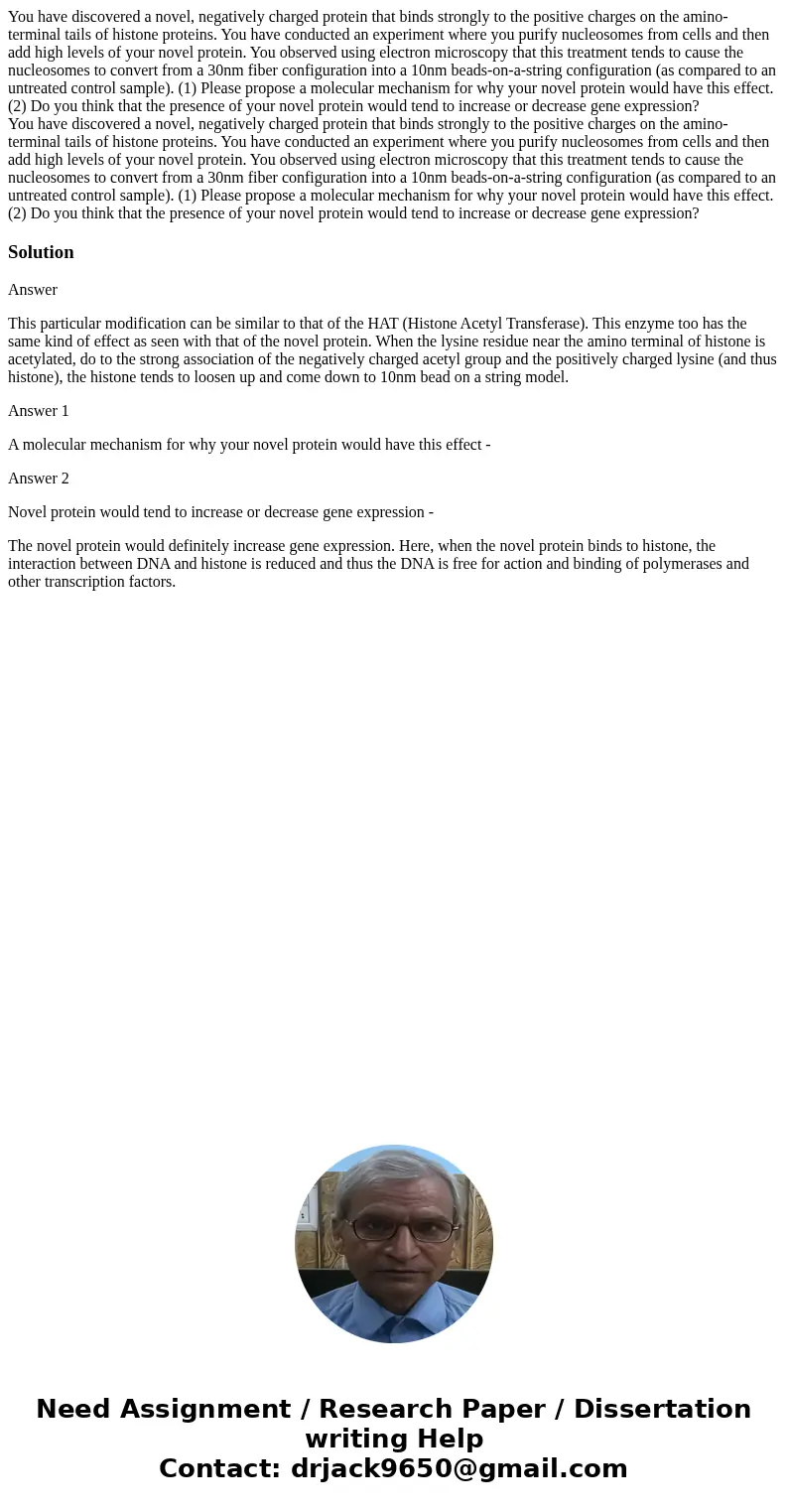You have discovered a novel, negatively charged protein that binds strongly to the positive charges on the amino-terminal tails of histone proteins. You have conducted an experiment where you purify nucleosomes from cells and then add high levels of your novel protein. You observed using electron microscopy that this treatment tends to cause the nucleosomes to convert from a 30nm fiber configuration into a 10nm beads-on-a-string configuration (as compared to an untreated control sample). (1) Please propose a molecular mechanism for why your novel protein would have this effect. (2) Do you think that the presence of your novel protein would tend to increase or decrease gene expression?
You have discovered a novel, negatively charged protein that binds strongly to the positive charges on the amino-terminal tails of histone proteins. You have conducted an experiment where you purify nucleosomes from cells and then add high levels of your novel protein. You observed using electron microscopy that this treatment tends to cause the nucleosomes to convert from a 30nm fiber configuration into a 10nm beads-on-a-string configuration (as compared to an untreated control sample). (1) Please propose a molecular mechanism for why your novel protein would have this effect. (2) Do you think that the presence of your novel protein would tend to increase or decrease gene expression?
Answer
This particular modification can be similar to that of the HAT (Histone Acetyl Transferase). This enzyme too has the same kind of effect as seen with that of the novel protein. When the lysine residue near the amino terminal of histone is acetylated, do to the strong association of the negatively charged acetyl group and the positively charged lysine (and thus histone), the histone tends to loosen up and come down to 10nm bead on a string model.
Answer 1
A molecular mechanism for why your novel protein would have this effect -
Answer 2
Novel protein would tend to increase or decrease gene expression -
The novel protein would definitely increase gene expression. Here, when the novel protein binds to histone, the interaction between DNA and histone is reduced and thus the DNA is free for action and binding of polymerases and other transcription factors.

 Homework Sourse
Homework Sourse